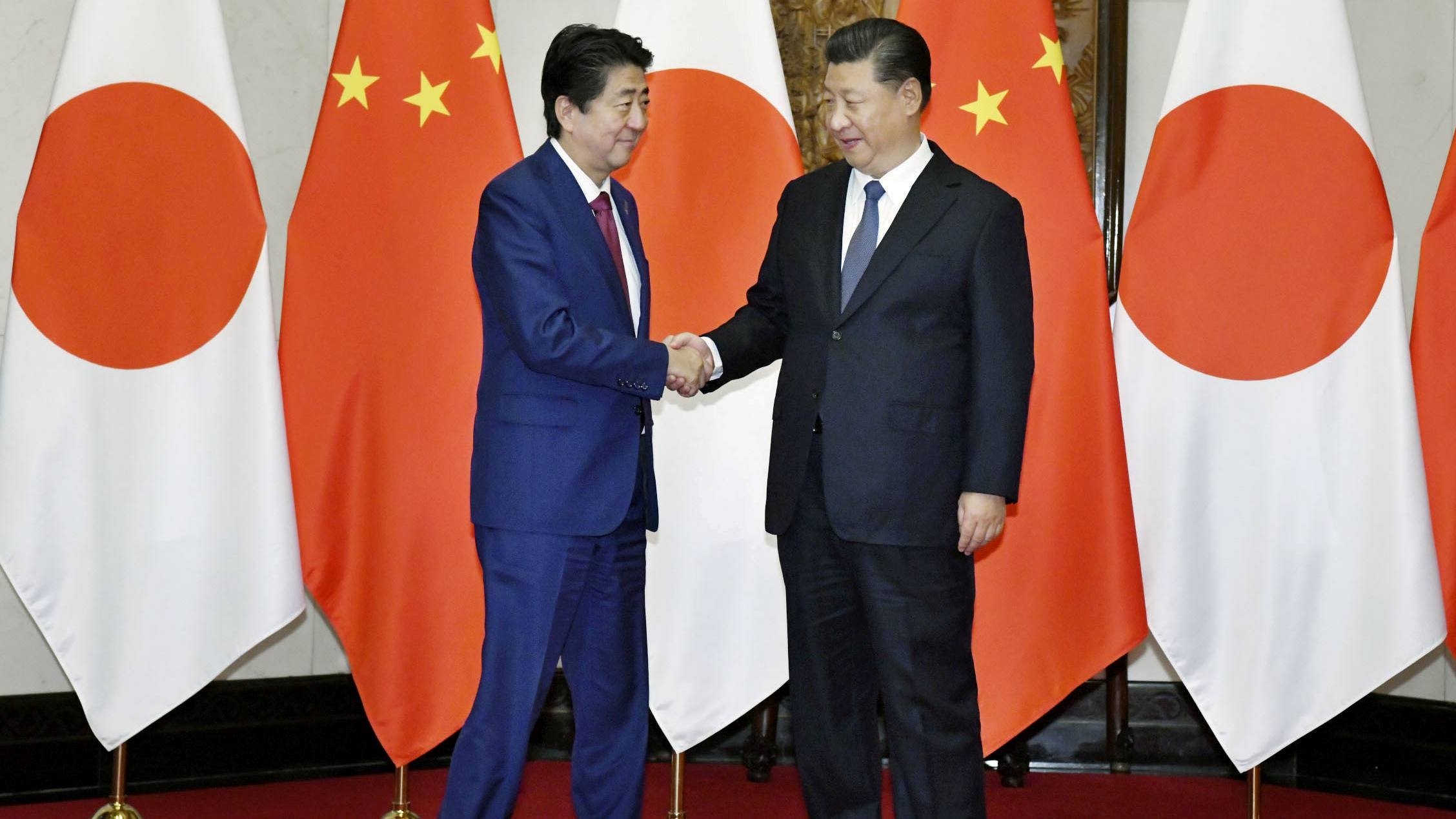Editor's note: Feng Da Hsuan is a chief adviser at the China Silk Road iValley Research Institute and former vice president of research and economic development at the University of Texas, Dallas. The article reflects the author's opinion, and not necessarily the views of CGTN.
In the two years since Donald Trump became president of the United States, something rather incredible has happened in the Asia Pacific among the big four nations: China, the Democratic People's Republic of Korea (DPRK), the Republic of Korea (ROK), and Japan.
When Obama was president, it was not an exaggeration to say that China, the DPRK, the ROK, and Japan were not on good terms. The animosity covered the region with a dark cloud of uncertainty.
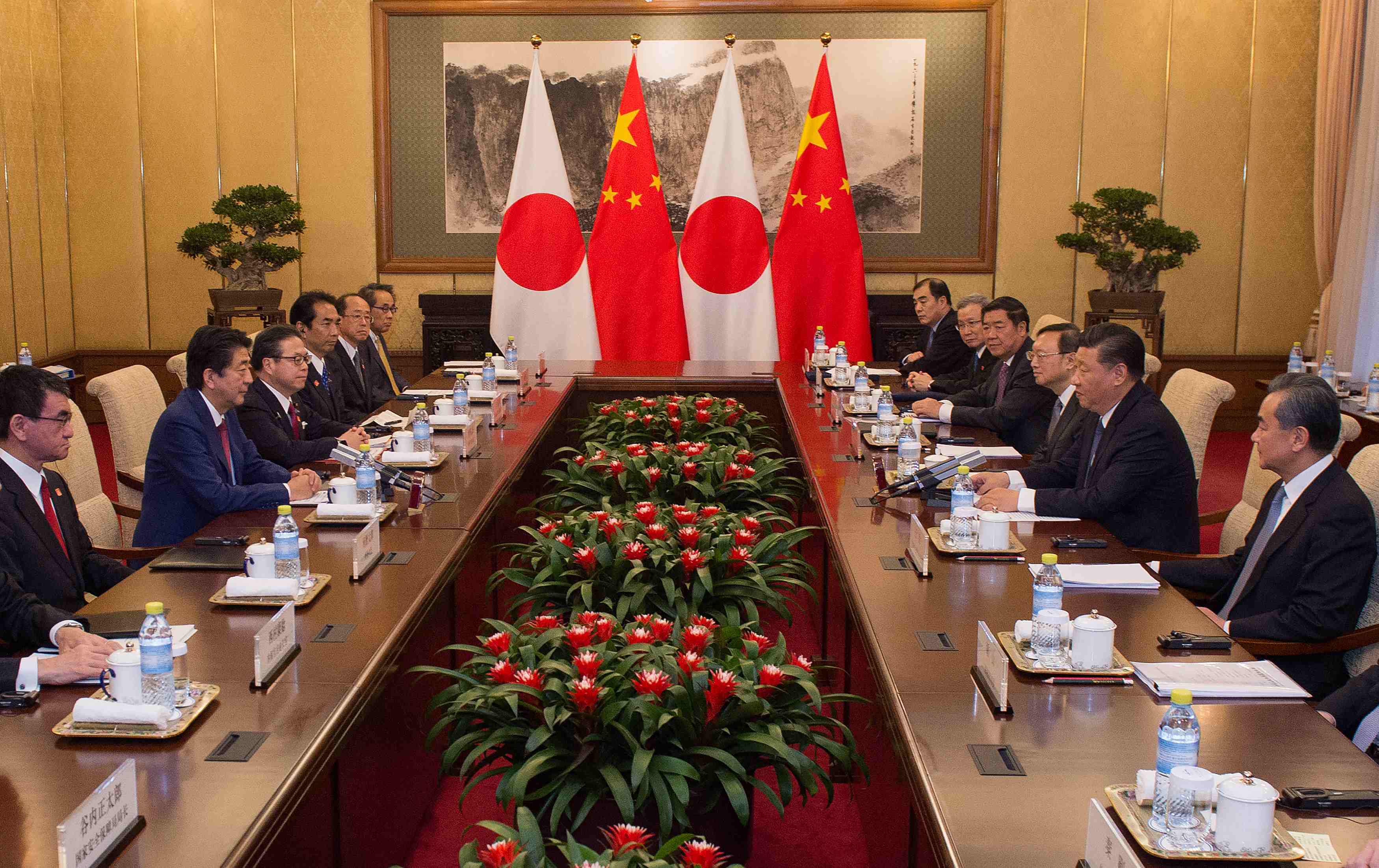
Japan's Prime Minister Shinzo Abe speaks with China's President Xi Jinping during a meeting at Diaoyutai State Guesthouse in Beijing, China, October 26, 2018. /Reuters Photo
Japan's Prime Minister Shinzo Abe speaks with China's President Xi Jinping during a meeting at Diaoyutai State Guesthouse in Beijing, China, October 26, 2018. /Reuters Photo
Since Trump became president, with him developing an unprecedented relationship with the DPRK, especially with Kim Jong Un, his policy of “America First,” as well as global trade wars, especially with China, northeast Asia is undergoing a mostly unnoticed transformation.
On October 26, it was reported that at Panmunjom on the 38th parallel between the DPRK and the ROK, the embedded mines are either cleared or mostly cleared. The relationships between the two countries have never been as warm as today. The unification of Korea is no longer impossibility.
Also, Japanese Prime Minister Abe visited Beijing this month as part of a state visit. It has been more than seven years since a leader of Japan has visited China.
During the first China-Japan Third-Party Market Cooperation Forum, the two governments signed 52 cooperation agreements spanning financial institutions, local governments, and enterprises, with a cumulative value of over 18 billion US dollars.
In his meeting with Chinese President Xi Jinping, Prime Minister Abe stressed that "the Belt and Road (Initiative) is a promising concept and Japan is willing to strengthen cooperation with China in a wide range of areas, including jointly exploring third-party markets."
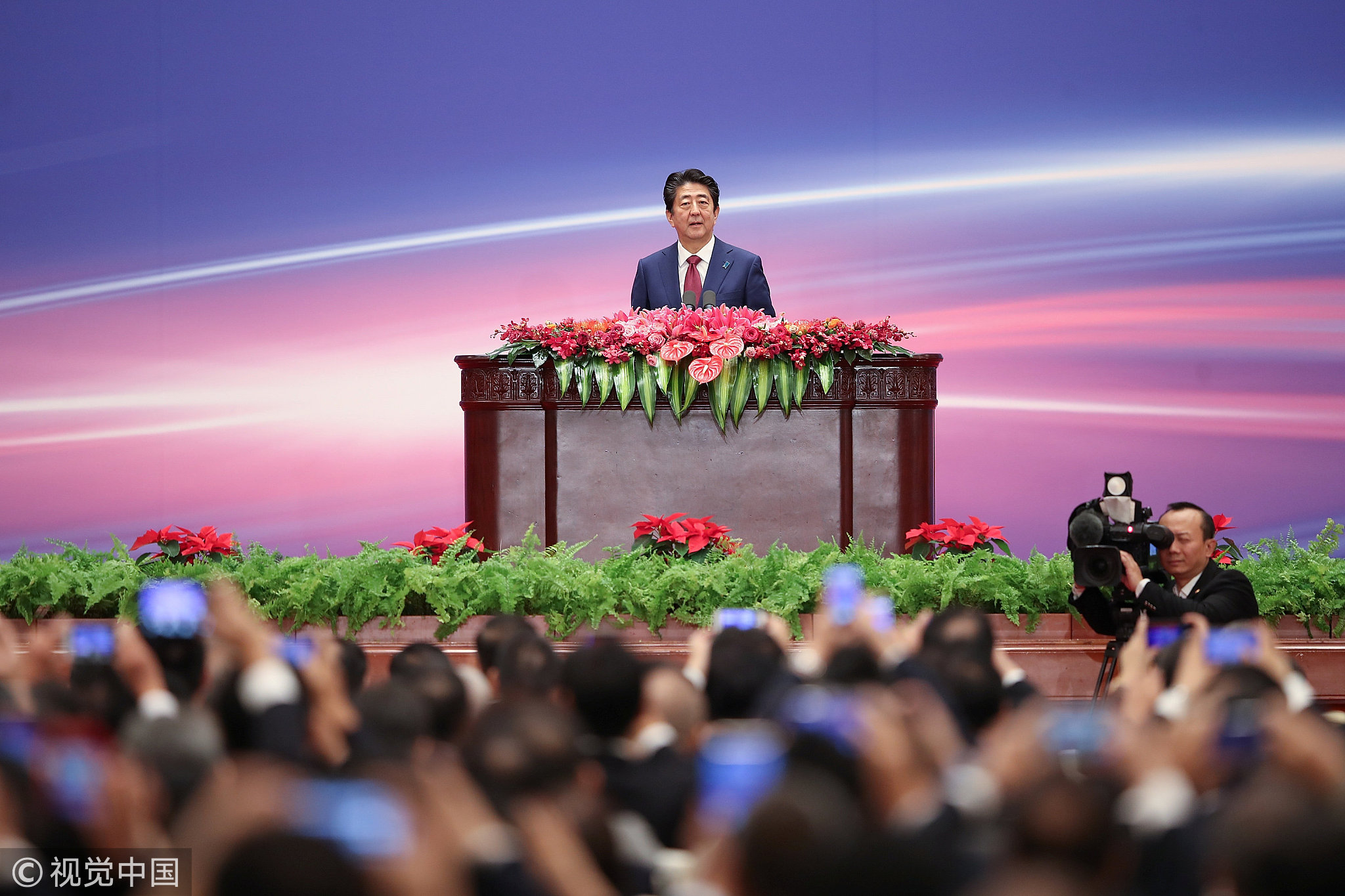
Japanese Prime Minister Shinzo Abe attends the 1st China-Japan Third Party Market Cooperation Forum with Chinese Premier Li Keqiang at the Great Hall of the People in Beijing, China, October 26, 2018. /VCG Photo
Japanese Prime Minister Shinzo Abe attends the 1st China-Japan Third Party Market Cooperation Forum with Chinese Premier Li Keqiang at the Great Hall of the People in Beijing, China, October 26, 2018. /VCG Photo
Granted, one needs to remember that some of these transformations are probably the consequence of the dictum, “There are no eternal friends, there is only eternal self-interest between nations,” but the vectors are all pointing in this direction, which merely a year ago would be unthinkable.
With that, let's take the unthinkable further.
One of the consequences of the armistices established between the ROK and the DPRK after the Korean conflict in 1953 was to render the ROK a de facto island with regard to the rest of Asia. For ROK citizens to travel to the rest of Asia and beyond, flying is the only option.
With relations between the DPRK and the ROK starting to thaw, it is certainly conceivable that high-speed rail could be available soon between all points in the Korean Peninsula, to China.
As China is working with Southeast Asian and South Asian nations, the day where a Korean could hop on a high-speed train in Seoul or Pyongyang and reach Beijing, Hanoi, Bangkok, Kuala Lumpur, Singapore, and even New Delhi, may not be out of the question.
Once there is high-speed rail connection between the DPRK and the ROK, and between the ROK and the rest of Asia, it could be accompanied by a fundamental transformation of the mindset of the people in the ROK and the DPRK, in how they view the rest of Asia, and in return, how the rest of Asia views Korea.
Indeed, the ROK would no longer be isolated from the rest of Asia. The rich Korean culture, history, food, and ways and means could be greatly understood by the rest of Asia. This is obviously good for all the Korean people and the rest of Asia.
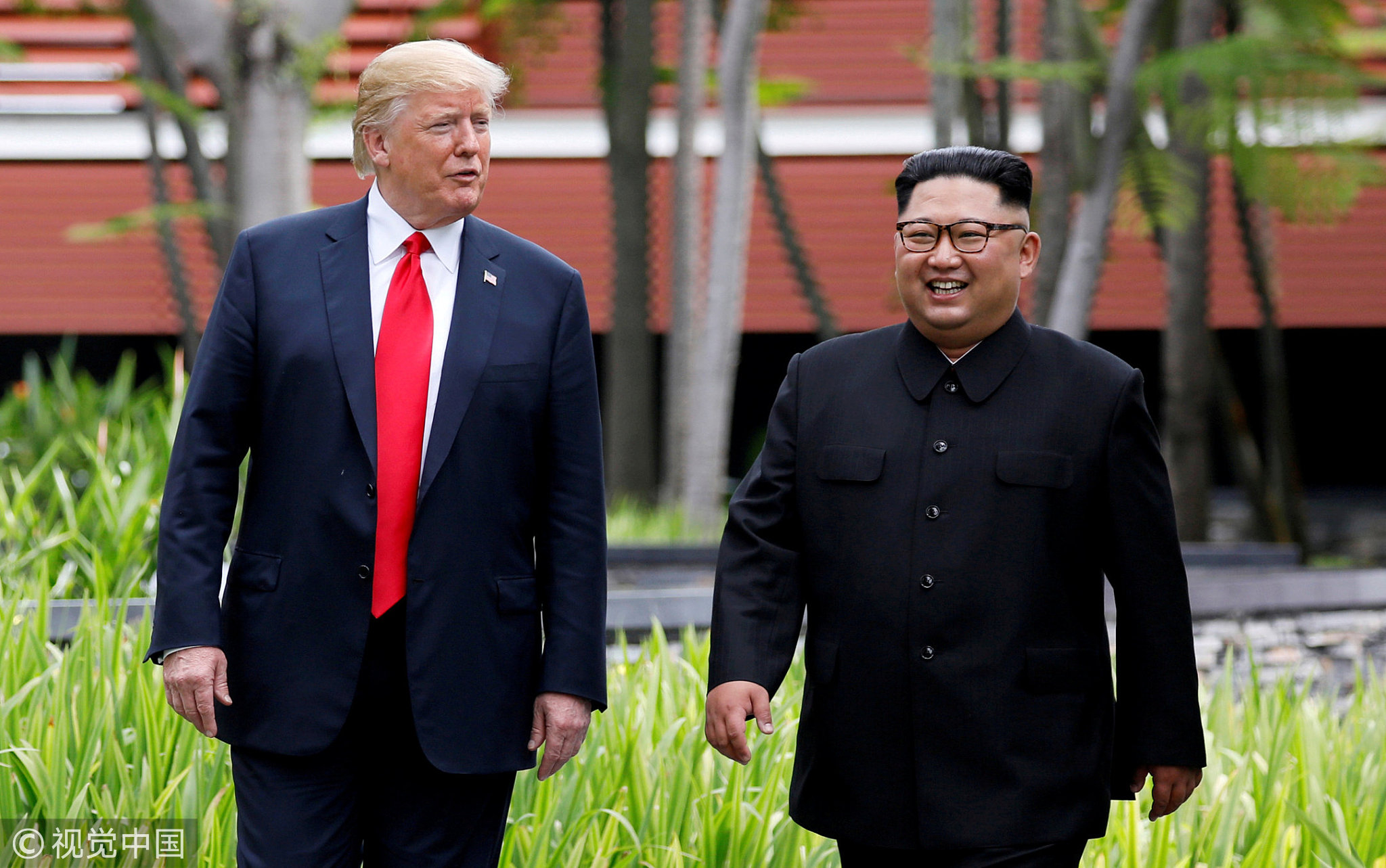
US President Donald Trump and DPRK leader Kim Jong Un walk after lunch at the Capella Hotel on Sentosa island in Singapore, June 12, 2018. /VCG Photo.
US President Donald Trump and DPRK leader Kim Jong Un walk after lunch at the Capella Hotel on Sentosa island in Singapore, June 12, 2018. /VCG Photo.
Geographically, Japan is an island nation. So, for any Japanese to go abroad, flying is also the only possible method for now. For a multitude of many painful historical reasons, Japan is subconsciously for all Asians to be “outside” of Asia.
For example, Japan, unlike China and Vietnam, as well as the Chinese communities in Southeast Asia, does not have “Lunar New Year” as its major holiday in Asia.
Japan was the pioneer of high-speed rail. It developed its rail system in the 1960s.
In the 21st century, by developing a comprehensive nation-wide high-speed rail system, China has unquestionably emerged as another powerhouse.
It is worth noting that the closest points between Japan and the ROK are Kyushu of Japan and Pusan of the ROK, which is separated by the Sea of Japan. Although the distance between these two cities is approximately 60 miles, there are two Japanese controlled island in between, Iki and Tsushima.
The distances between Kyushu and Iki, Iki and Tsushima and Tsushima and Pusan are approximately 15 miles, 20 miles, and 25 miles, respectively.
On October 24, 2018, China unveiled an engineering marvel, a mega-bridge between Zhuhai in the Chinese mainland and its two special administrative regions – Hong Kong and Macao.
This bridge, which also has an underwater tunnel, is approximately 56 kilometers long. With the completion of this mega bridge, China's engineering prowess has made another quantum jump.
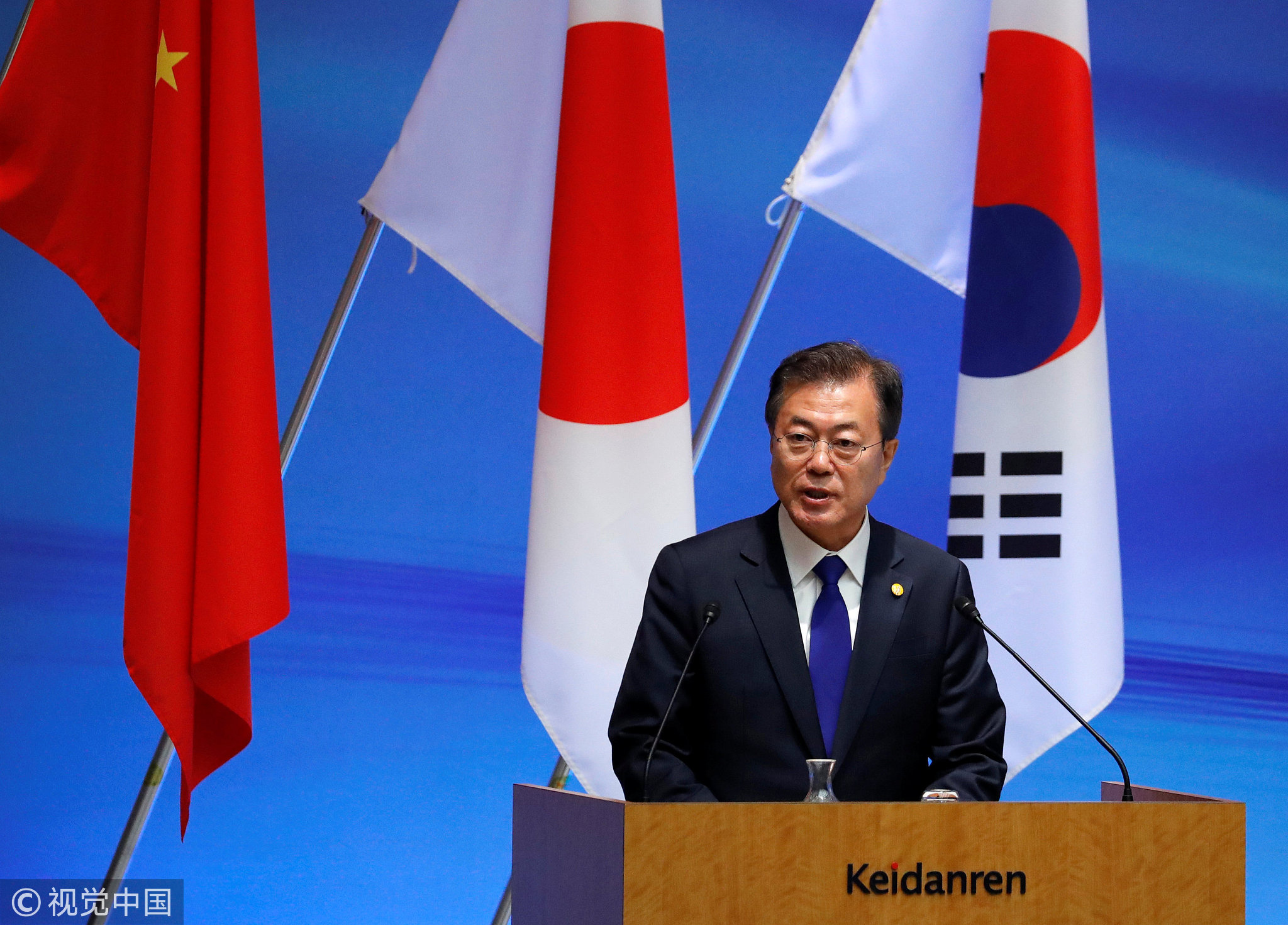
ROK President Moon Jae-in attends the 6th Japan-China-Korea Business Summit with Japan's Prime Minister Shinzo Abe and Chinese Premier Li Keqiang (not pictured) in Tokyo, Japan, May 9, 2018. /VCG Photo.
ROK President Moon Jae-in attends the 6th Japan-China-Korea Business Summit with Japan's Prime Minister Shinzo Abe and Chinese Premier Li Keqiang (not pictured) in Tokyo, Japan, May 9, 2018. /VCG Photo.
Putting all the above together, one could envision that merging the two powerhouses of high-speed rail, Japan and China, rather than constantly competing globally, and add on the technological and financial powerhouse of Korea, the feasibility of connecting Japan, the ROK, the DPRK, and China, creating a China-Japan-Korea rail system, should be without question.
This is true only if the financial and political challenges, which should not be underestimated, can be overcome.
As was mentioned, Japan is an island nation. It is physically separated from the Asian continent. If a North Asia mega bridge were built, not only could one embrace Japan into the Asia Pacific, in a “land” manner, it could possibly have a profound impact on the mindset of how Japanese view the Asia Pacific, and vice versa.
Since WWII, China, the ROK, the DPRK, and Japan have made a stunning transformation, economically, politically and even culturally. Yet, while they are individually making their respective influence felt global, one could imagine that together they could literally transform the world into a better future for mankind.
Undoubtedly, without the political transformations manifested recently, all this would at best be a pipe dream. However, with them, while it may still be far-fetched, it is no longer impossibility.
(If you want to contribute and have specific expertise, please contact us at opinions@cgtn.com.)

